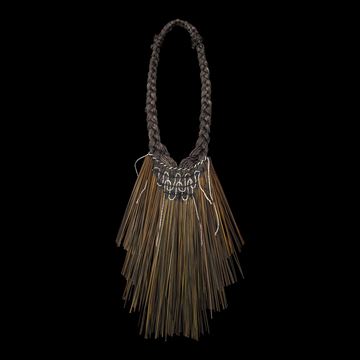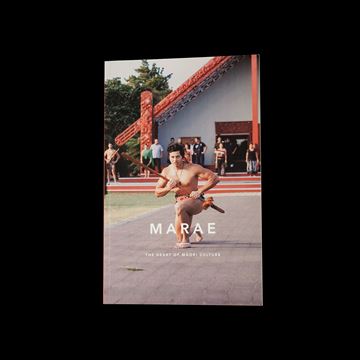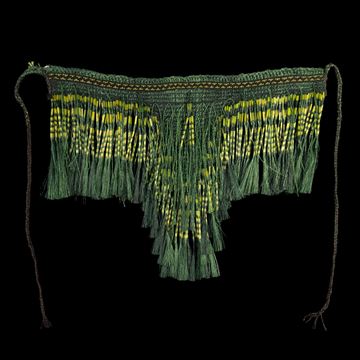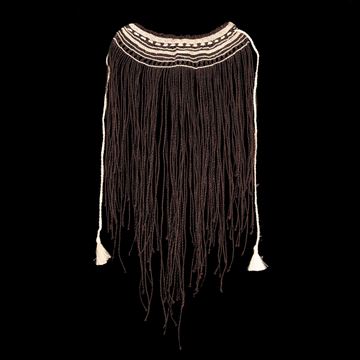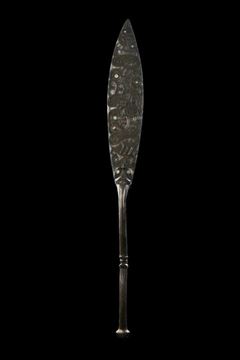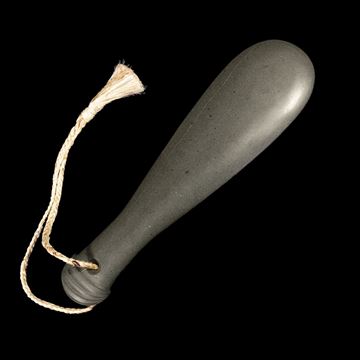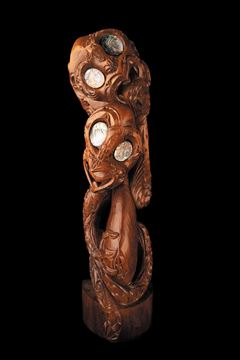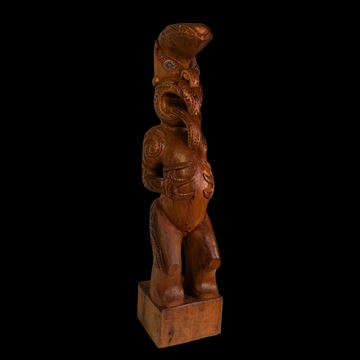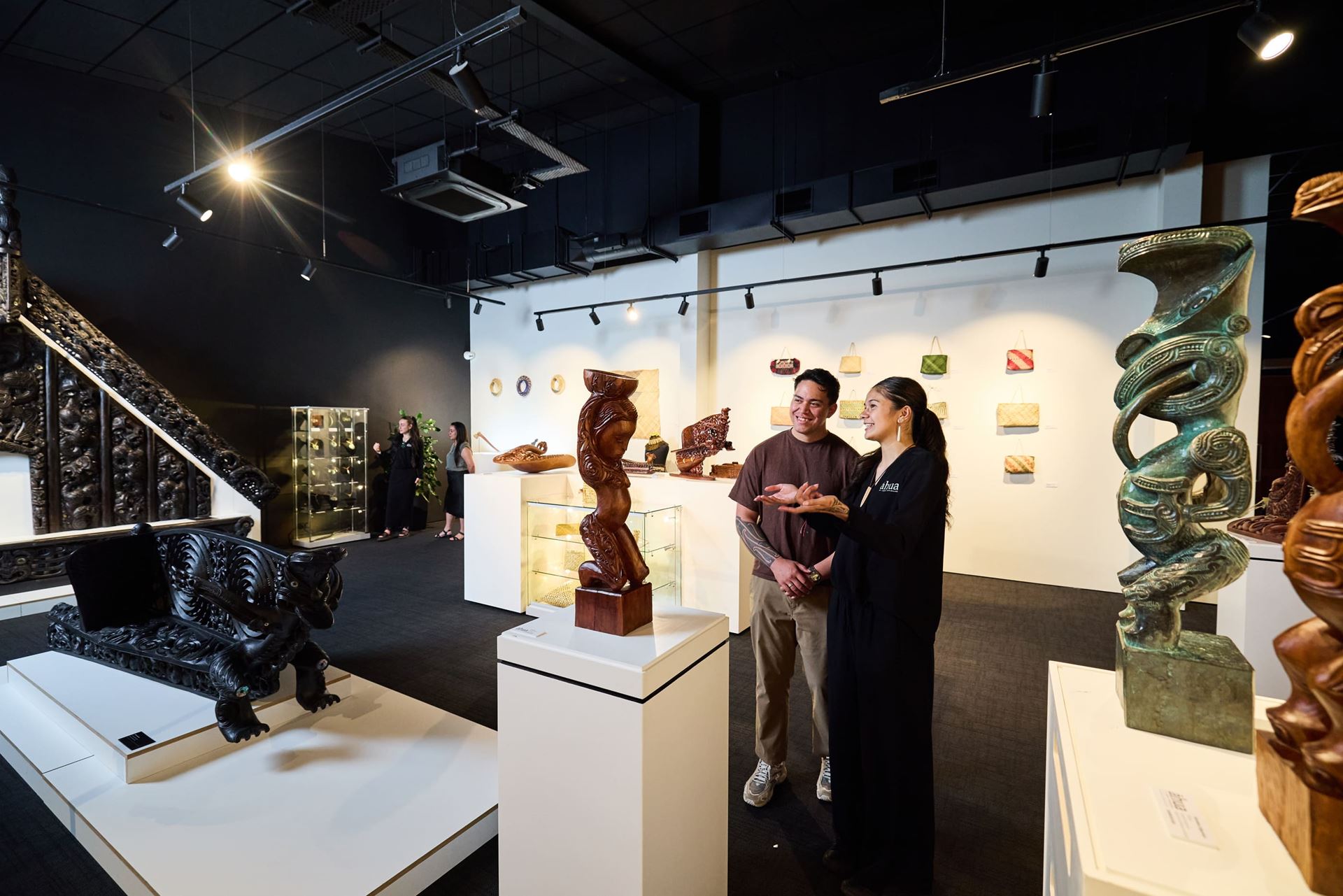
Āhua Gallery
Select Subcategory
Hei Piu - 4918TE
Hei piu (neck piece) is a contemporary fashion statement utilising Māori tradition.
Material: Harakeke & Muka
Measurements: 350mm x 170mm
$690.00
Maro - 4905TE
The maro is a frontal apron tied around the waist and is a traditional garment that is worn by both men and woman. This maro has been fashioned with strands of muka fibre within the flax.
Material: Harakeke & Muka
Measurements: 680mm x 480mm
$1,395.00
Maro & Neck Piece Set - 4912TE
The maro is a frontal apron tied around the waist and is a traditional garment that is worn by both men and woman. This maro has been fashioned with strands of muka fibre within the flax.
Maro
Material: Harakeke & Muka
Measurements: 470mm x 340mm
Neck Piece
Material: Harakeke & Muka
Measurements: 305mm x 80mm
$2,900.00
Neck Piece - 6800AE
Hei Piu (neck piece) are contemporary fashion statements utilising Māori tradition
Material: Muka
Measurements: 180mm x 590mm
$590.00
Bronze Hoe
The paddle or hoe was the means of propulsion for the Māori waka (canoe). While the hoe was primarily a paddle, it also doubled as a weapon when the need arose. Carved paddles were the property of the chief and were highly valued. The hoe came in different styles and the handles and blades differed from area to area.
$45,000.00
Patu Onewa - 6721PD
Patu (meaning to strike or hit) were typically fashioned from native hardwood, whalebone or stone, including our highly valued pounamu (greenstone). Patu were often sharp at their forward edge and were used with thrusting, jabbing and swinging blows.
Māori weapons are notable for their fine sculptural form and were designed for close hand-to-hand combat. No other stone-age war implements surpassed them in deadly effectiveness.
Material: Onewa (NZ Greywacke)
Measurements: 380mm x 100mm
$2,190.00
Tekoteko - 4763TA
The tekoteko is a stylised representation of the main progenitor of a tribe and is the most focal point of the whare whakairo (carved tribal meeting house). They can be found – on traditional meeting houses – either at the highest point at the front apex of the roof or at the front central post. They can also be found at the base of the poutokomanawa (the main central ridge support post) of the house.
Material: Tōtara
Measurements: 870mm x 220mm x 180mm
$3,900.00
Tekoteko - 4813HG
The tekoteko is a stylised representation of the main progenitor of a tribe and is the most focal point of the whare whakairo (carved tribal meeting house). They can be found – on traditional meeting houses – either at the highest point at the front apex of the roof or at the front central post. They can also be found at the base of the poutokomanawa (the main central ridge support post) of the house.
Material: Tōtara
Measurements: 865mm x 210mm x 180mm
$4,200.00
Wheku - 6346HW
In Māori carving there are three predominant designs for heads: the 'wheku' with its long eyes; the 'koruru' with its round eyes; and, the 'ruru', which also has round eyes but with a point at the top.
The different designs were used by carvers to illustrate the character of the subject they were carving. The long eyes of the wheku were often used to depict a squint or frown. Material: Pakohe (Argilite) Measurements: 48mm x 37mm
The different designs were used by carvers to illustrate the character of the subject they were carving. The long eyes of the wheku were often used to depict a squint or frown. Material: Pakohe (Argilite) Measurements: 48mm x 37mm
$750.00
Wheku - 6347HW
In Māori carving there are three predominant designs for heads: the 'wheku' with its long eyes; the 'koruru' with its round eyes; and, the 'ruru', which also has round eyes but with a point at the top.
The different designs were used by carvers to illustrate the character of the subject they were carving. The long eyes of the wheku were often used to depict a squint or frown. Material: Pakohe (Argilite) Measurements: 59mm x 48mm
The different designs were used by carvers to illustrate the character of the subject they were carving. The long eyes of the wheku were often used to depict a squint or frown. Material: Pakohe (Argilite) Measurements: 59mm x 48mm
$750.00

